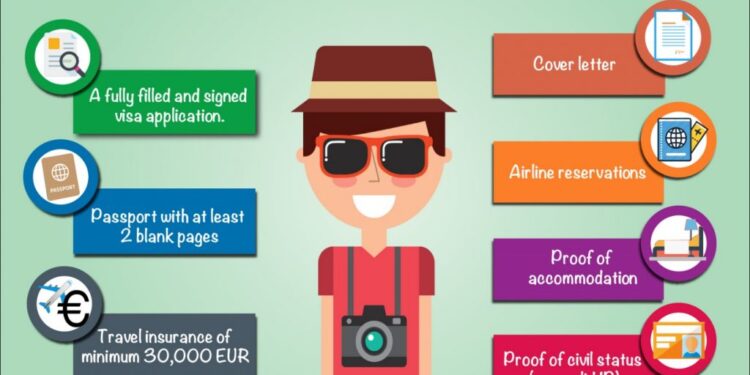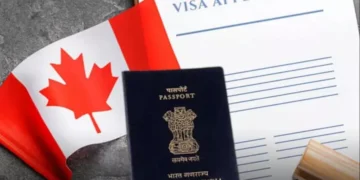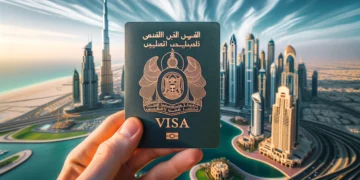Planning an international trip often involves a lot of preparation, and one of the most critical components of that preparation is securing the appropriate visa for your destination. Whether you’re traveling for tourism, business, or study, understanding the specific requirements of each country’s visa application process is essential to ensuring a smooth journey. VISA CHECKLIST FOR ANY TRIP This guide provides a detailed checklist to help you navigate the visa process, from the necessary documents to the various types of visas, application procedures, expected processing timeframes, and helpful travel tips.
Key Documents for Visa Application
The first step in securing a visa for any international trip is gathering the necessary documentation. Different countries have different requirements, but the most common documents needed include: Valid Passport: This is the most important document for international travel. Ensure your passport is valid for at least six months beyond your planned date of departure from the destination country. Some countries may also require that your passport has at least one or two blank pages for entry stamps. Visa Application Form: Most countries require travelers to complete a visa application form. These forms can typically be found on the official embassy or consulate website of the country you’re visiting. Depending on the country, you may be required to fill out the form online or submit a physical copy. Passport-sized Photos: Most visa applications require recent passport-sized photos that meet specific size and background requirements. These photos should be taken within the last six months.
Proof of Financial Stability: Many countries want to ensure that travelers can support themselves during their stay. This may include recent bank statements, proof of income, tax returns, or sponsorship letters from someone in the destination country. Travel Itinerary: Depending on the visa type, you may need to provide details of your travel plans, including flight bookings, hotel reservations, and details of your planned activities during your trip. Some countries may require a detailed travel itinerary, while others may only ask for proof of entry and exit. Health Insurance: Some countries, particularly those in the Schengen Area, may require proof of travel health insurance that covers medical emergencies, including hospitalization and repatriation. Additional Supporting Documents: Depending on the type of visa you’re applying for, additional documents may be required, such as a letter of invitation for business or family visits, university acceptance letters for student visas, or employment verification letters for work visas.
Understanding Different Types of Visas
Visas come in a variety of types, and selecting the correct one is crucial to the success of your trip. Below are some of the most common visa types: Tourist Visa: This is the most common type of visa for leisure travelers. It allows you to enter a country for tourism, vacation, or to visit friends or family. Tourist visas are usually short-term and can be valid for anywhere from a few days to several months. Business Visa: Business visas are issued to individuals who are traveling to a country for work-related purposes. This may include attending meetings, conferences, or negotiating business deals. Business visas may also have specific entry restrictions, such as limited stay periods or conditions regarding employment. Student Visa: For individuals planning to study abroad, a student visa is required. This visa is typically issued for the duration of your academic program, and you may need to provide proof of acceptance to an accredited educational institution. Transit Visa: A transit visa is for travelers who are passing through a country on their way to another destination. This type of visa is typically valid for short stays (from a few hours to a few days) and is issued when you are not planning to leave the airport or transit area. Work Visa: A work visa is issued to individuals who are traveling to another country for employment purposes. Depending on the country and type of work, this visa may require employer sponsorship and proof of employment. Schengen Visa: The Schengen visa allows travelers to visit multiple European countries within the Schengen Area on a single visa. It is typically issued for short stays and is valid for tourism, business, or family visits.
Visa Application Process
Once you have gathered the necessary documents and determined which visa you need, the next step is submitting your application. VIETNAM VISA FOR CHINESE The visa application process generally involves the following steps: Fill Out the Application Form: This step requires you to provide personal details such as your name, nationality, passport number, travel dates, and the purpose of your trip. Submit Documents: After completing the application form, submit the required documents, such as your passport, photos, travel itinerary, financial proof, and health insurance.
Pay the Visa Fee: Most visa applications require payment of a processing fee. The fee varies depending on the country and type of visa. Ensure that you confirm the correct amount and payment method (e.g., online payment or in-person payment at the embassy). Attend an Interview (if required): Some countries require applicants to attend an in-person interview as part of the visa application process. This is especially common for visa types like work visas or student visas. Wait for Processing: After submitting your application, you will need to wait for processing. Processing times can vary significantly depending on the country and type of visa, so be sure to apply well in advance of your planned departure.
Visa Processing Timeframes
Visa processing times vary depending on the destination country, type of visa, and time of year. In general, you can expect processing to take anywhere from a few days to several weeks. For example, a tourist visa may take 5-10 business days, while a work or student visa could take several weeks or even months.
To avoid complications, apply for your visa as early as possible. Some countries allow you to track the status of your application online, while others will send you updates via email or post. It’s always best to plan for a longer processing time than to wait until the last minute.
Travel Tips for a Smooth Visa Process
To ensure a smooth and successful visa application process, consider the following tips:
Start Early: Begin your visa application as soon as possible to allow ample time for processing. Visa applications can sometimes take longer than expected. Follow Instructions Carefully: Ensure that you follow the application instructions to the letter. Missing or incorrect documentation can delay or even result in the rejection of your visa application. Double-Check Requirements: Before applying, check the visa requirements of your destination country to make sure you have the correct documents and meet all eligibility criteria. Consider Travel Insurance: In addition to travel health insurance, it’s a good idea to purchase comprehensive travel insurance that covers cancellations, lost luggage, and unexpected delays. By carefully following this visa checklist and staying organized, you can ensure that your visa application is processed smoothly and on time, allowing you to enjoy your trip without unnecessary stress.















